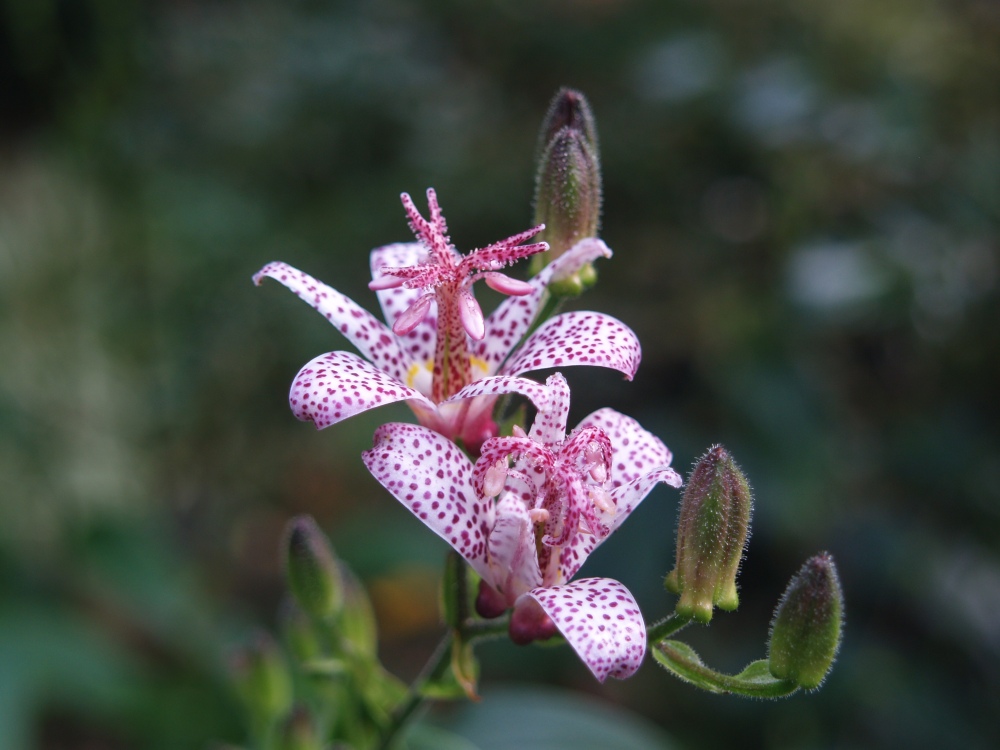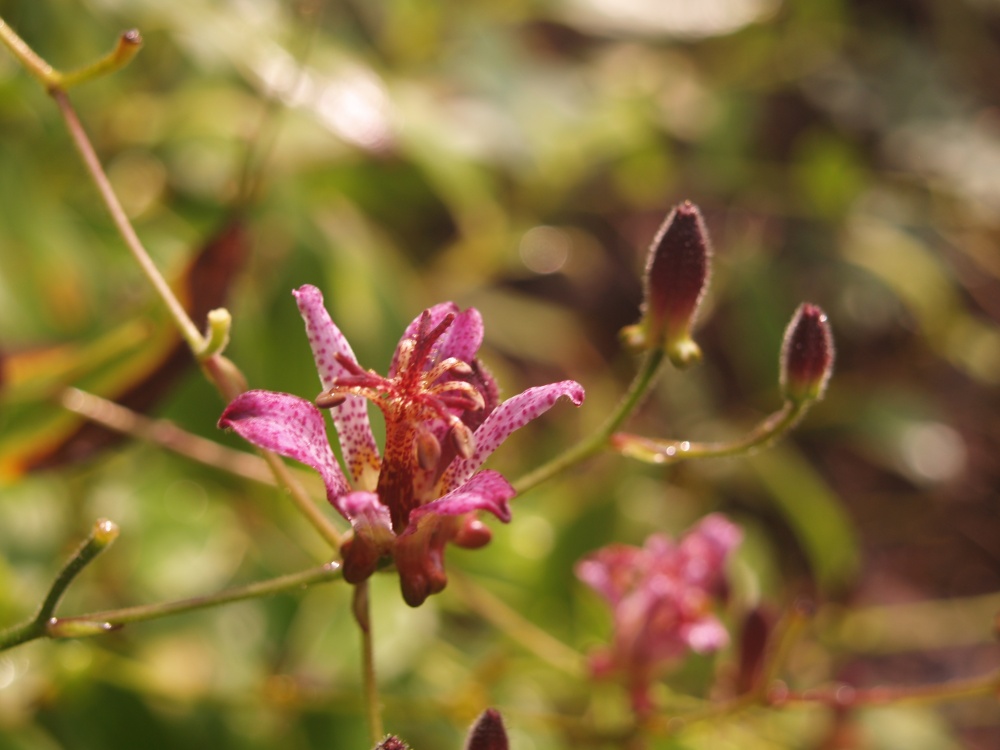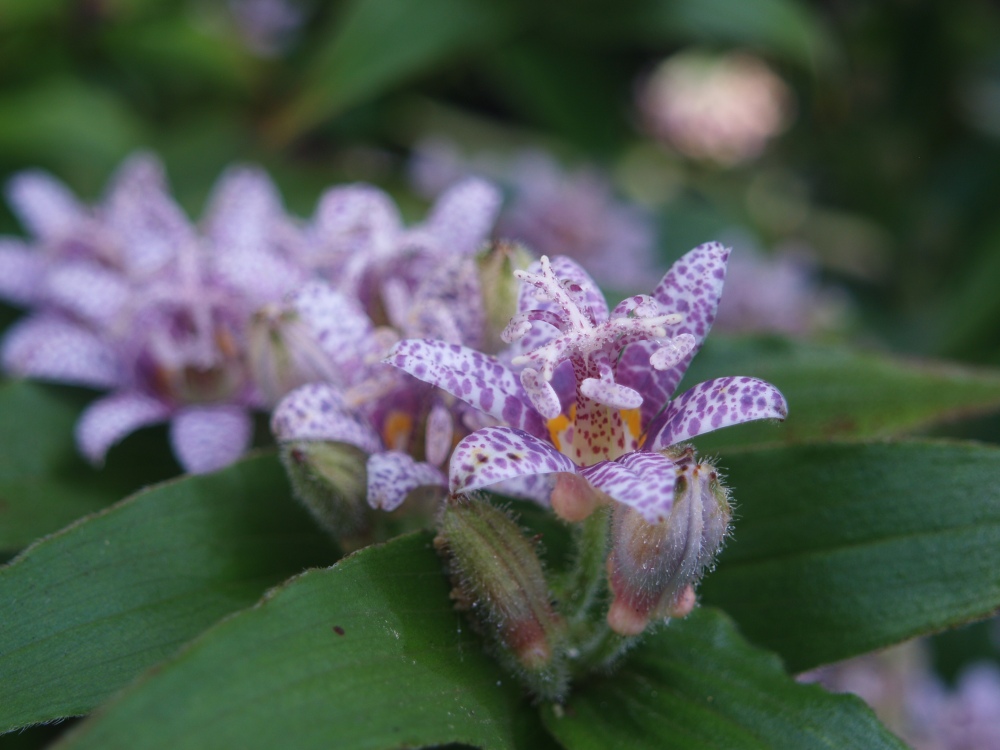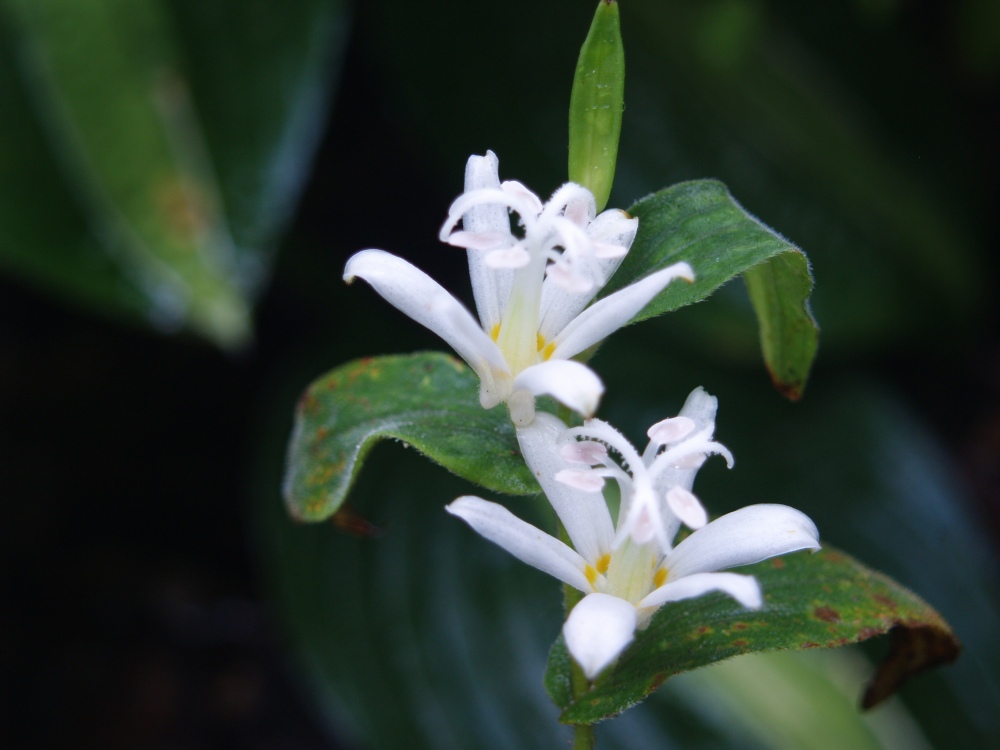The common names of plants can be aptly descriptive, or absolutely puzzling. The mostly spotted blooms of toad lilies (Tricyrtis) are exquisite, and indeed it is difficult to imagine that the flowers bear any resemblance to toads, so do not be dissuaded by such an unpleasant moniker. Toad lilies are pest free and easy to grow, and though the foliage is unremarkable through spring and most of the summer, the late summer and early autumn blooms are quite splendid.
Toad lilies prefer part shade or a mostly sunny spot with a bit of a break from the afternoon sun, and slightly moist soils. I’ve had poor results in dry shade, or in competition with tree roots. As I’ve increased my collection with plants purchased through mail order I’ve had a few problems with small pots surviving a short period of neglect through a a dry spell, but I’ve had no issues with more established plants in one gallon containers. I’m hooked on toad lilies to the extent that I’m determined to try every new introduction, so I’ve decided to construct a transplant bed where I can watch over the more tender newcomers.
The earliest of the toad lilies in the garden began to bloom at the start of August (Tricyrtis formosana ‘Samurai’, above), but most begin in early September with the heaviest flowering late in the month through mid October. I’ve found ‘Samurai’ to be the most undisciplined of the group with wiry stems that sprawl in every direction (though mostly they lean towards the afternoon sun), and blooms that are more scattered on branch tips than other varieties. This was the first toad lily I planted, and the original plant has been divided with several planted in increasingly dense shade, and one in nearly full sun that grows more compact (though still flopping about) and blooms more heavily.
Over a period of years I’ve planted a handful of ‘Sinonome’ (Tricyrtis x ‘Sinonome’, above) in bright shade, and a few in almost full sun that have grown wonderfully. ‘Sinonome’ seems not to branch at all (in sun or shade, even if cut back in mid summer), but stems grow straight and sufficiently rigid not to flop. Its flowers are more heavily spotted in purple than others, and often several on a branch tip bloom concurrently for a better show. The green foliage is glossier than other varieties, and in full sun it exhibits almost no stress or burning, even in the heat of summer.
The most compact of the garden’s toad lilies is ‘Miyazaki’ (Tricyrtis hirta ‘Miyazaki’ above) with stiff branches that are broadly vase shaped. There are flower buds at the base of each leaf node that open over a short period so that they will almost overlap when fully in bloom (below). Ideally, I would prefer a bit more spacing between blooms, but I don’t get to choose such things, and this is the most spectacular of toad lilies in full flower, though it is also the least tolerant of sun. 
‘Lightning Strike’ (Tricyrtis hirta ‘Lightning Strike’, below) is similar in habit and flowering to ‘Miyazaki’, though stems arch slightly more and flowers are spaced a bit. Its foliage is notably striped in gold so that it is the most attractive when not flowering, and in more dense shade in the garden it performs admirably. ‘Lightning Strike’ is the only toad lily that has spread itself from the main clump (though only by a few inches), and whether this is from seed or from the roots I haven’t discovered.
Somewhere in the garden I’ve planted ‘Tojen’, ‘Moonlight’, ‘Gilt Edge’, and a yellow flowered variety (that isn’t flowering yet) who’s name escapes me, and forgive my poor memory and lack of organization in not recalling which is which and what is where. One newcomer to the garden this spring that has survived one hundred degree heat and my lack of attention is ‘Maya White’ (Tricyrtis hirta ‘Maya White’, below), which is too small at this point to tell much about its growth habit, but is blooming exceptionally for such a small fellow.
Toad lilies blooms are best appreciated close up, the closer the better. Crouching is not close enough for me, and on my knees I still lean lower to view them within a few inches of my nose. This is not an appropriate plant to be seen from across the neighborhood, but a splendid choice for gardeners who leisurely stop and kneel at every turn. Bumblebees are attracted to the flowers, and large bees must squeeze under the anthers, or cheat and pinch through the base of the blooms for their nectar. 
I love the understated elegance of toad lilies. They grow well here in Berlin, Germany.